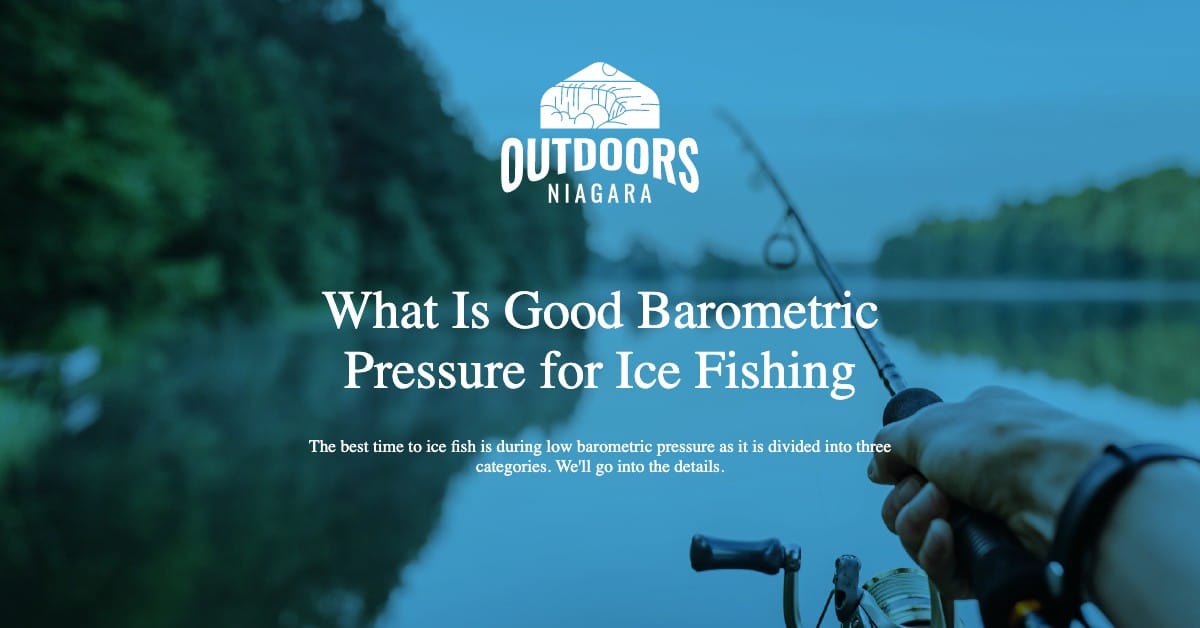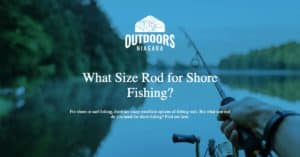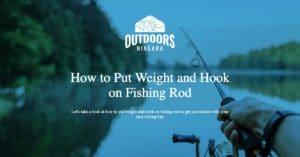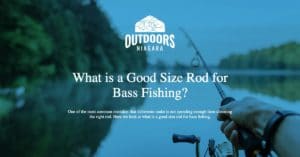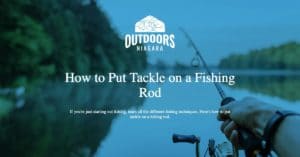Does barometric pressure have an impact on ice fishing success? The short answer is yes taking barometric pressure is important in fishing success.
Barometric pressure is divided into three categories:
- High – Starts at 30.50 and rises – Indicative of clear skies
- Medium – Ranges from 29.7 – 30.40 – Indicative of fair weather – generally a few clouds to heavy cloud cover with times of clear skies – can have small bouts of rain.
- Low – Starts at 29.60 and falls below – Heavy clouds, rain, and stormy weather – often higher winds.
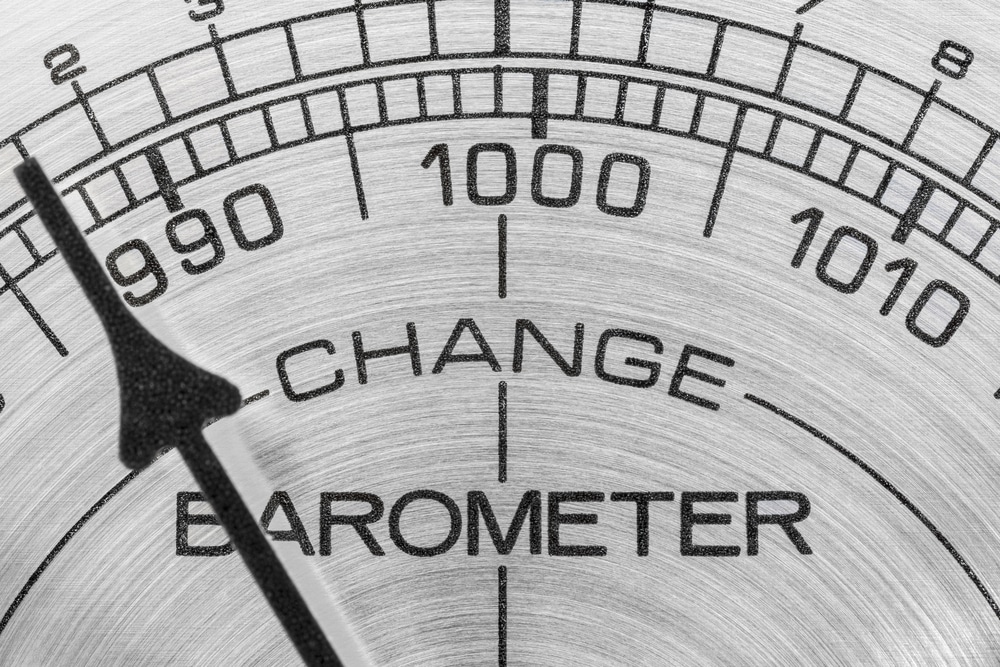
Contents
What is a good barometric pressure for ice fishing?
The best time to ice fish is during low barometric pressure. Ice caps on a lake or river already compress the water and that can make fish sluggish and slow. When you add high pressure, which is basically more atmospheric weight on top of the weight of the ice cap, the water becomes denser and fish are more likely to either move lower in the water column or hunker down and stop eating. Medium pressure can be another option for ice fishing. The pressure of the water will still be higher than during a low-pressure event, but there may also be pockets of zones within the lake or pond where the water is more comfortable for the fish.
Low-pressure events offer the least amount of compression of the water and therefore the best opportunity to ice fish. During a low, the fish are more comfortable in the water and will be more active. They are much more likely to be feeding and browsing for food selections.
Pressure also affects fish based on their anatomy; specifically, the size of their swim bladders. Fish with larger swim bladders are more impacted by increased pressure and are more likely to hunker down and wait for the pressure to change or to allow their bodies to become more acclimated to higher pressure.
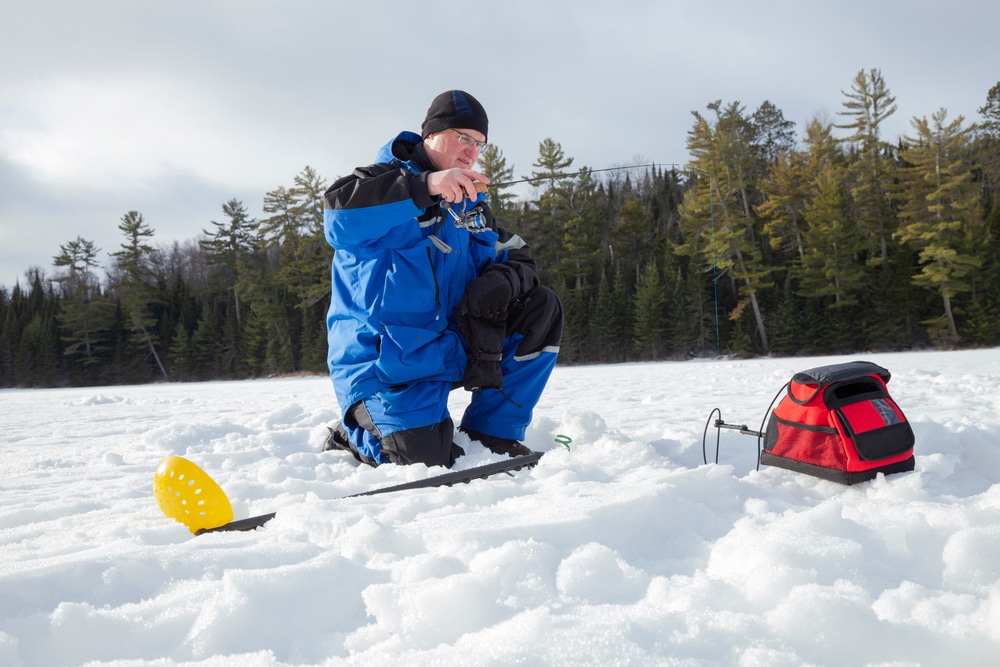
You can break up the Barometric Pressure into subcategories:
- High – Not the best for ice fishing – Expect bluegill and perch to be more active than other fish during high pressure. Expect trout and bass to be less active.
- Medium – Most fish will remain active during medium pressure – target trout, bass, pike, bluegill, and perch.
- Low – is the best time to ice fish, all fish remain active and this can be an excellent time to target big, trophy fish, such as bass and trout.
- Very low – Not such a great time to ice fish. The very low pressure has the same effect as high pressure does. It changes the water conditions too quickly for the fish to adapt. A few days under very low pressure and the fishing will improve. For the first few days, the fish may hunker down and not eat. The exception is small fish, which are less impacted by high pressure and very low pressure.
- Pressure increasing rapidly – A time to stay home. increasing pressure, especially when it occurs rapidly, causes fish to hunker down and remain inactive until they can adjust to the new pressure.
- Pressure decreasing rapidly – This is a good time to ice fish. The decreasing pressure, especially rapid decreases in pressure means that a storm is likely coming. Fish tend to be more active just before a storm and will be actively feeding so that they can hunker down during the worst of the storm without being overly hungry. Big fish are more impacted by rougher waters – storm waters – and they will be looking for food before a storm. Rapidly decreasing pressure is a good time to target Pike, big Trout, Big Bass, and smaller fish, such as bluegill and perch.
How does the barometer affect ice fishing?
Barometric pressure is best described as the weight of the atmosphere. Higher barometric pressure means more atmospheric weight, while low and very low barometric pressure means less atmospheric weight.
When you have an ice cap on a lake, the higher pressure pushes down on the ice and causes the water beneath the ice to compress or become denser. That process makes it difficult for fish with larger swim bladders to navigate the waters. Those fish, trout, pike, and bass, tend to lie low during high-pressure events. There is less impact on smaller fish or fish with smaller swim bladders. A swim bladder is an air-filled organ that fish use to help them ascend or descend in the water. More air means the fish goes up, and less air means that gravity allows the fish to swim deeper more easily. Higher pressure impacts how their swim bladders work.
Medium and Low-pressure events have the least impact on fish and their swim bladders. The water may be slightly denser, but those changes are generally gentler, and the fish adapt more quickly. Very low pressure can have the same effect as high pressure, the fish have problems with their swim bladders and navigating the water.
Note: Even under the worst pressure, fish will adjust to the new pressure in a day or two. For that reason, you can ice fish with more success, even in very low or higher atmospheric pressure, after a few days of the pressure event.
Is rising barometric pressure good for ice fishing
Generally not – unless the barometric pressure is rising from a very low-pressure situation, then the fishing will be better. If the pressure is rising from a low or medium barometric pressure event, then expect the fishing action to decrease.
Do fish like high pressure or low pressure?
Fish prefer low barometric pressure.
Is fishing better on a falling or rising barometer?
Fishing is much better when the barometric pressure is falling. Falling barometric pressure means a storm or storm-like weather is approaching. For fish, that means rougher water. It is harder for fish to navigate in rougher water, and it takes more energy to swim in rough water. Energy is the equivalent of food for fish and rough water means they need more calories to do the same amount of work, For that reason, fish tend to frenzy feed before a storm and then hunker down during the storm.
How do you read barometric pressure for fishing?
A barometer is a gauge that has needles on it and a list of numbers on a dial. The main needle moves as the barometric pressure changes – rises or falls – The needle will point to a number on the dial, and you can read the number to see what the barometric pressure is. Most barometers have three main sections – high, medium, and low, with a range of numbers within those sections. A second needle allows you to track the changes. You move the smaller needle where the current barometric pressure is indicated by the main needle and then when you check back in an hour or so, you can see if the pressure is rising or falling.
What Are the Best Conditions for Ice Fishing?
We’ve talked about fishing in high pressure, medium pressure, and low pressure. What we’ve not discussed is stable pressure, which can be high, medium, or low-pressure events. When a pressure event lasts for a week or two weeks, the fish have to get on with their lives. They will feed during a stable event as though it is a normal pressure event for them. Day three of a pressure event is going to be an okay day to ice fish. When the pressure starts to change, and it will, you should pay more attention to what the pressure is doing.
In terms of barometric pressure, the best time to ice fish is during low or medium-pressure events. In the weather forecast, weathermen often refer to isobars – those are numbers that indicate pressure. They will also indicate high or low-pressure systems on their maps, which will help you see what you are facing. Falling low pressure often indicates a storm or a storm system moving through.
Falling low pressure is the time you want to be on the ice and fishing before the storm hits.
If you are fishing in a rapidly falling pressure situation, or before a storm, you probably want to have an ice hut. These are small portable tent-like structures that allow you to weather the storm, and you can even heat most of them. Not many people want to stand out on the ice in the severe wind or driving rain, but you can fish in comfort within an ice hut.

